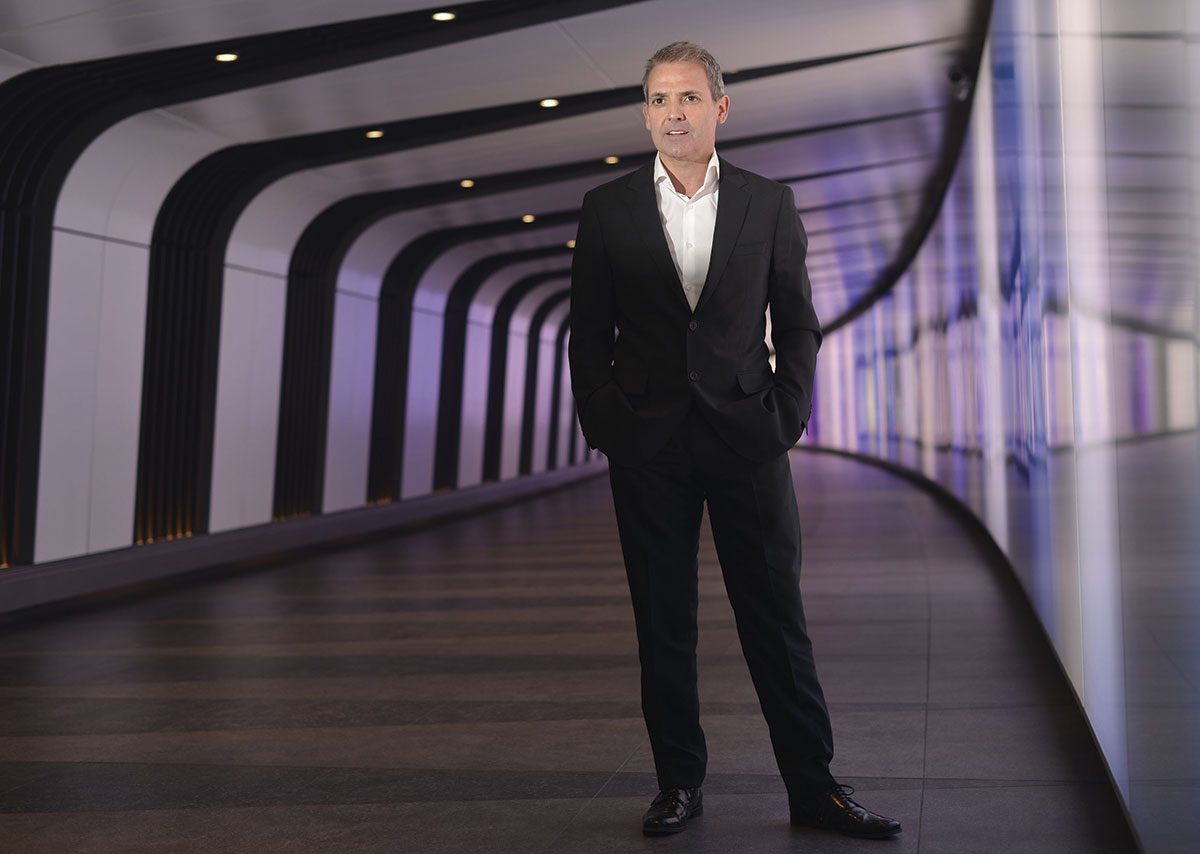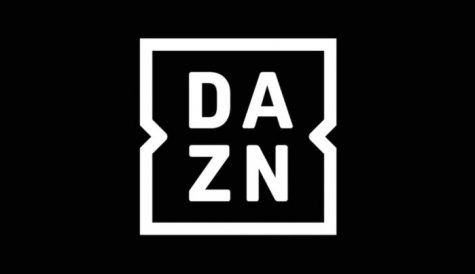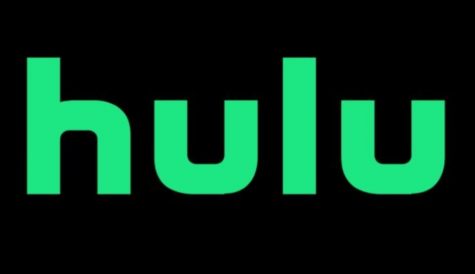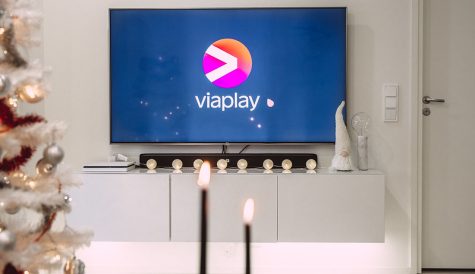
After more than 40 years of operation, DTVE is closing its doors and our website will no longer be updated daily. Thank you for all of your support.
The DTVE interview: Eamonn O’Hare, Zegona Communications
 Eamonn O’Hare, CEO of UK-based Zegona Communications – the biggest investor in Spanish telco Euskaltel – talks to DTVE’s Stuart Thomson about the attractions of the domestic market and opportunities further afield
Eamonn O’Hare, CEO of UK-based Zegona Communications – the biggest investor in Spanish telco Euskaltel – talks to DTVE’s Stuart Thomson about the attractions of the domestic market and opportunities further afield
It is now four years since Zegona Communications, the investment outfit set up by former Virgin Media executives Eamonn O’Hare and Robert Samuelson, invested in a relatively small-scale cable operator in the Asturias region of northern Spain, at a time when it was far from obvious that the Spanish telecom market represented an attractive opportunity.
The country was then just beginning to recover from the fallout of the 2008 financial crisis and the telecom market was characterised by intense price competition.
O’Hare, the former Virgin Media chief finance officer who serves as Zegona’s CEO, saw that the Spanish market offered a number of advantages that made it a fertile ground for investment, however. Not all of these were in place in 2015, but the possibility of change was there, he says. The economy was showing distinct signs of life, and Zegona could see that the price-based competition among providers that was then prevalent would have to give way to a more rational way of doing business. It is also a market that was consolidating. Last but not least, says O’Hare, there were assets available to buy.
Zegona, which was created to invest in underperforming telecom, media and technology assets with a ‘buy-fix-sell’ strategy, was able to acquire the smallest of the three regional cable operators that have a significant grip on the TV and telecom market in northern Spain. Having lost out in a competition to acquire Galicia’s R to the Basque Country-based Euskaltel, it purchased Asturias-based Telecable and sold it to Euskaltel two years later, delivering a 42% return to investors and securing a 15% minority stake in the operator.
Now Euskaltel’s largest shareholder with a stake in excess of 20%, Zegona has set about pushing for a more ambitious expansion strategy under new CEO José Miguel García, who was responsible for the development of telco Jazztel prior to its acquisition by Orange.
“We saw that all three operating assets could be improved,” says O’Hare, citing the need to get a grip on capital expenditure and improve customer service.
O’Hare also believes there will ultimately be further consolidation in Spain, with the number of cable players reduced from two to one. “I’m not obsessed about how the combination will work,” he says. “There are many permutations, but the scale piece is important, and the synergies are important.”
For now, consolidation is less important than putting Euskaltel on a growth curve. This means two things: “One is sorting out the business in its current footprint, where there is a legacy of putting it together with two other assets that didn’t completely integrate – which will deliver incremental cash flow. The other is a unique opportunity to expand outside its geographic footprint beyond the 15% of the country that it currently serves.”
National expansion
Euskaltel, which has until now been hemmed into the three regions of the Basque Country, Galicia and Asturias, could continue as it is, generating cash but without “great growth prospects”, he says. Alternatively, it can step out and redefine itself as a player on the national stage, something that the Spanish market favours, uniquely in O’Hare’s view.
“Spain offers two things that are unique in our view. You can get access to fibre at economically viable rates – meaning you can go to Orange and possibly other providers and get access to their fibre, which is hard to do in some other markets. And you can get access to data-rich mobile networks with an MVNO agreement that doesn’t imply the squeeze on margins this often means,” he says.
The position of MVNOs in Spain can be contrasted, for example, with that of Sweden where cable operator Com Hem, which struggled to develop a mobile play that could be sustainable, recently merged with Tele2 in order to develop a convergence play.
For O’Hare, Euskaltel will also benefit from the fact that the Spanish market is “very far ahead” of most other European countries in terms of fibre infrastructure investment and, crucially, from the existence of a thriving wholesale business driven by Orange that allows operators to target specific localised markets to test the waters.
“You can choose a city, and then a suburb of that city, start off small and work out if people are going to buy. If they like what you offer, you can convert from wholesale to a mutualisation model,” he says. The latter involves taking a long-term lease with better terms.
We can provide high-quality TV functionality with a skinny content bundle and we think that works because you can give people high-quality TV combined with fibre
To capitalise on the advantages that the structure of the Spanish network business offers and build a national presence, says O’Hare, Euskaltel also needs a brand that resonates beyond its northern Spanish core markets. Zegona, whose executives came out of Virgin Media, has been associated with moves to take the Virgin brand to Spain and O’Hare says this “a very viable option”, with research indicating the brand resonates with younger Spaniards. However, he stresses, it is not the only option.
O’Hare emphasises that he does not see Euskaltel as a ‘disruptive’ brand on the model of Xavier Niel’s Free in France. “We believe in orderly markets,” he says. “If Euskaltel can secure a small slice of a big and growing market it will be transformational for the company.” He points to the success of mobile operator MásMóvil, which has grown its fixed business from virtually a standing start to over 1.2 million subscribers in just two and a half years.
TV, he suggests, will be a key differentiator for Euskaltel as it expands nationally, with an emphasis on functionality over exclusive content and big bundles that characterises the competition.
“Euskaltel is about its proposition of super-fast broadband, data-rich mobile, fixed phone and also TV. TV means skinny content. The Spanish market today is about ‘more for more’, meaning full-fat bundles at a high price,” he says. “We can provide high-quality TV functionality with a skinny content bundle and we think that works because you can give people high-quality TV combined with fibre.”
The deployment of an Android TV set-top combined with features such as network-based DVR and live pause and rewind as part of a €50-60 multi-play bundle gives the company “a reasonable chance to capture a small piece of a growing market”, says O’Hare.
“We are hoping to capture people wanting to pay a smaller amount for a high-quality TV experience with free TV and pay TV options,” he says.
Euskaltel has stood aside from offering La Liga football, with O’Hare characterising the current market for premium football rights in Spain as “irrational”, with Telefónica paying a large sum for rights and seeking to recuperate some of that investment by selling those on to other operators – though only Orange has signed up.
Despite Vodafone’s well-documented subscriber losses attributed to the absence of football from its content line-up in the face of aggressive poaching of its football fan customers by Telefónica and Orange, O’Hare is sanguine about the absence of the sport from Euskaltel’s offering. He believes that the economics of football on TV in Spain do not currently make sense.
“The dynamics will sort themselves out over the next few years and the irrational economics of it will disappear over time,” he says, adding that the impact of not having football will be limited to some extent by the national habit of congregating in bars to watch matches. In the meantime, he says, “Euskaltel is not part of the football equation and our national expansion will not be centred on that”.
Investment opportunities
O’Hare says that Zegona was created to take a “hands-on, operating company approach” to the assets it invests in, rather than as a “deal machine” looking to make a quick exit.
The company, he says, “looks at a lot of opportunities” and rejects most because they don’t match its criteria. Its stake in Euskaltel is currently its sole investment, which leads O’Hare to mull on an apparent discrepancy in value between the value of that stake and Zegona’s own market capitalisation.
Zegona’s shares currently trade at a substantial discount to the value of its stake in Euskaltel, something O’Hare attributes to lack of awareness about the company’s specific circumstances. One hundred per cent of Zegona’s earnings are denominated in euros, meaning that it benefits from the decline of sterling’s value. Euskaltel pays a healthy dividend that goes straight back to Zegona’s own shareholders.
O’Hare also points out that Zegona could in theory transfer its stake in the Spanish operator in specie to its own shareholders, some of which are already direct shareholders in Euskaltel.
“We are not exposed to Brexit and we pay a good dividend. We are a bit under the radar and we think this is a capital markets anomaly that we are determined to fix,” he says.
O’Hare says that Zegona is focused on staying on as an investor in Spain for a number of years but adds that the company will continue to look at other investment opportunities. He identifies a number of ‘themes’ that are attractive, including mid-sized cable operators like its existing asset. He says that small incumbent telcos “of which there are many” are also interesting, as are mobile-only operators “but only in certain circumstances”.
O’Hare believes that the telco space – and specifically the small-to-mid-sized players that Zegona is interested in – is ripe with investment opportunities because alternative sources of finance have largely vacated the market.
The customer service equation is vastly more important than whether you have fibre that goes from A to B and then coax. A lot of telcos get carried away with engineering
First, big tier-one telecom operators have changed their strategy over the last few years from “planting flags around the world” to focusing on their core domestic and adjacent geographical markets. This focus to some extent follows the changing nature of their customers’ needs, with a move towards convergent fixed and mobile packages, meaning that operators need a deeper presence in national markets to cater to this requirement.
The renewed focus on a deeper presence in a locality means there is a gap in the market for investors in those non-strategic assets that the bigger players no longer consider to be core to their business.
Second, other investors are also no longer in the market for telecom assets to the same extent as a few years ago. Private equity outfits, says O’Hare, are now more interested in technology assets: “Telecoms isn’t doing it for them any more.”
Third, entrepreneurial investors such as Altice founder Patrick Drahi, Iliad Telecom owner Xavier Niel or Liberty Global’s John Malone face significant challenges with their existing assets and no longer appear to be in the market for further acquisitions.
The wider background is that the European telecom market remains fundamentally fragmented.
O’Hare estimates that there are about 180 significant operators across Europe, compared with a tenth of that number in the US. He believes there is a need for scale and a crying need for consolidation, driven by convergence, with fixed-line players acquiring mobile assets and vice versa.
The CEO believes this consolidation will happen, although with the caveat that the overall number of players is unlikely to dip below 100. “Scale matters for infrastructure and content,” he says.
When it comes to that ‘buy-fix-sell’ strategy, what also matters, in O’Hare’s view, is delivering great service and a proposition that customers will value.
For all the much-touted value of cable’s network architecture, whether an operator has fibre, coax, copper or a combination of all three is largely irrelevant, he says.
“The customer service equation is vastly more important than whether you have fibre that goes from A to B and then coax. A lot of telcos get carried away with engineering,” he says. “The marketing message and the way you treat your customers trumps infrastructure.”


